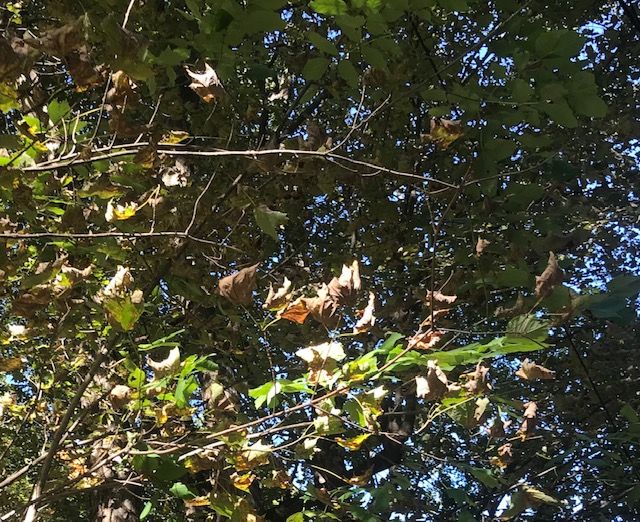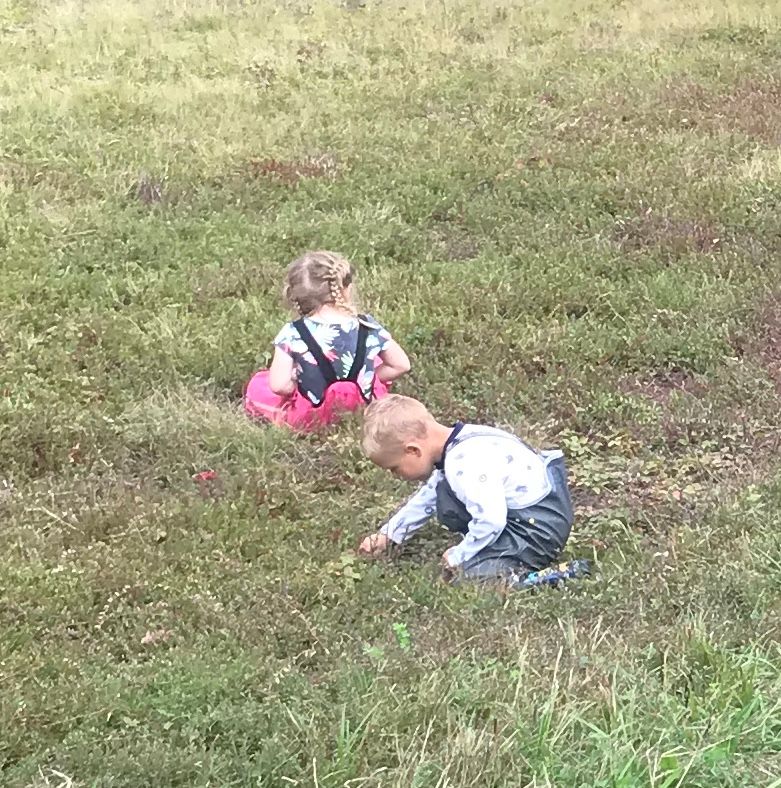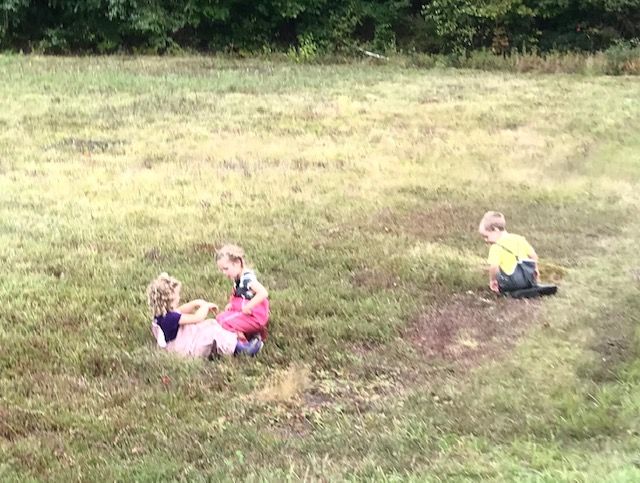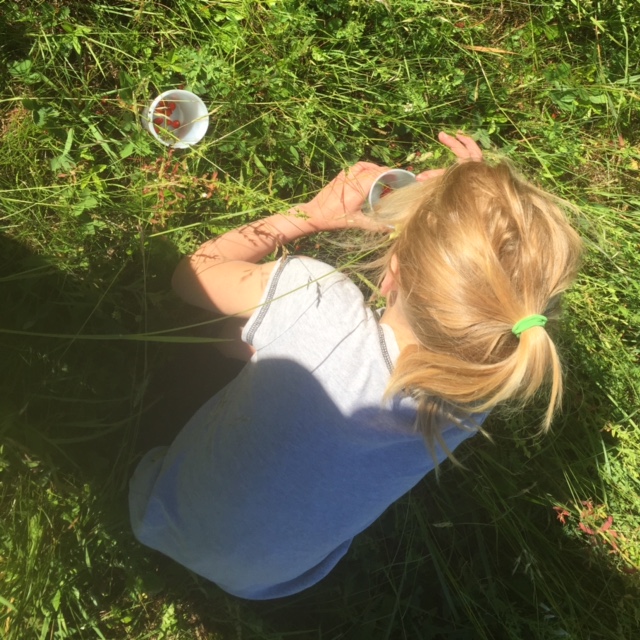I can never remember a summer as wet as the past summer was, in southern New Hampshire. I can remember wet spells, especially in springtime, but never such a persistence of damp and dour and dripping dismalness, during summer.
About a decade ago we had a record-setting, dark and drenching June, but it dried out in July. Other years have seen training, July gully-washer thunderstorms that caused local flash floods. And of course, dying tropical storms have given us amazing August and September rains and floods, (most notably Connie and Diane in 1955). However, all these events are mostly a matter of days, or at most of two or three weeks. This past summer made me sit up and take notice.
Not that the summer was “unprecedented”. Just because you yourself have never seen a thing happen before doesn’t mean it never happened. It was said (I think by President Truman) that, “The only thing new under the sun is the history you haven’t read.” If you look back through the records you will often see our forefathers endured worse.
However, just to argue with myself, I will also assert that every day is fresh and new. Each day differs from other days in a manner that makes each day have a unique fingerprint. Therefore, every day is in some way “Unprecedented”.
To truly be a great meteorologist one must on one hand study history, and on the other be aware that another word for “freshness and newness” is, “Chaos”. In fact, predicting weather is nearly as hard as predicting humanity. Meteorologists are nearly as inclined to forecast incorrectly as psychologists are.
The major difference is that when meteorologists forecast incorrectly, they cannot put the weather in jail for disobeying them. Psychologists, on the other hand, can institutionalize their clients for indicating that their pet therapy was and is and ever more will be total bunkum.
Politicians tend to be more like psychologists than like meteorologists. When Stalin was wrong, he was far more inclined to institutionalize his subjects than confess his own error. Blame is a wonderful thing, if you have the power to get away with it. When Stalin’s invasion of Finland was a debacle, it was wonderful (for Stalin) to be able to purge generals, as Stalin himself kept his status as “infallible”.
In actual fact, the only One worthy of being called “infallible” is God. Stalin made a mistake when he tried to replace the Almighty, and his end was tragic. To avoid such tragedy, it is far better to confess we do fail, which meteorologists are able to do. They have a thing or two to teach the rest of us about humbleness.
But they can’t claim credit, for the true teacher is a thing called “weather”. In New England some say, “If you don’t like the weather, wait a short while.” What this statement suggests is that weather can do what psychologists can’t. Weather can improve your mood, where psychologists at times charge you an absurd amount for an hour spent making you feel that you are insane. The sun breaking through the clouds charges you nothing, but can change your life by making you feel saner. In the case of Johnny Nash and the song, “I Can See Clearly Now”, the good mood prompted by sunshine sold a million copies, but the sunshine charged nothing.
If sunshine can elevate our mood, then rain can depress it, if the rain does more than end a drought. (No rain at all is not a good thing.) And here we notice something about the euphoria so wonderfully described by Johnny Nash’s hit song. The reason “seeing clearly” is such a good thing, and the reason “the rain is gone” and “the pain is gone” is because the “obstacles” are clearly seen. What this suggests is that there was an earlier time when “obstacles” were not so clearly seen. As the poet Longfellow put it, “Into each life some rain must fall.”
A quick perusal of Johnny Nash’s life does show a darker time followed by a brighter time: A recording studio he attempted to run in the United States collided with cutthroat competition and a certain unwillingness to invest in new music, so he declared bankruptcy, moved to Jamaica, where expenses were far lower and the Reggae-scene embraced new music, and there he found success and a “bright, bright, sunshiny day”, (and a million-seller).
In a sense Johnny Nash did what meteorologists do. He admitted he failed, when he declared bankruptcy, and without that admission he could not have moved on to his million-selling success.
This brings me around to the dismal topic of those who cannot admit their failure. I am referring to the so-called “Elite” who live in the so-called “Swamp” of Washington DC, and satellite swamps such as “Hollywood”.
What failure can they not admit? Chiefly, they cannot admit they are increasingly unpopular. They are addicted to fame, and lust for applause, but increasingly hear booing. (“F— Joe Biden!”) They need to see they might be doing something wrong, but instead dismiss their audience as idiots. Their increasing unpopularity in fact lost them the last two presidential election, but they used fraud to “win” the last one. This did not make them more popular. In like manner, many of their ideas are rejected by other highly intelligent thinkers, yet, by employing “cancel culture” and censoring differing ideas on platforms such as Facebook, YouTube, and Twitter, the Elite think they create the illusion everyone agrees with them.
This vain foolishness is painful to watch. It is as if a meteorologist predicted sunshine and it rained, and the meteorologist was so vain he walked about in the rain wearing sunglasses and saying, “Isn’t this sunshine wonderful?”
Or perhaps singing, “I can see clearly now. It’s pouring rain.”
Rather than embracing Truth, such people prefer ignorance. It hurts to see it. It is embarrassing. They are making such complete jackasses of themselves! Yet, in their ignorance, they actually believe they are “winning”. They believe they are “popular” even as they alienate. They are as ridiculous as a person who cheats at solitaire, for even in their alienated loneliness they puff out their chests and swagger about “winning”.
The loving thing to do with such people is to gently and kindly inform them of the Truth, but fifty years of sad experience informs me that such people are all too often incorrigible. They are too certain they are “winning” to see they are not. After fifty years I have witnessed many such people come to bad ends. I never wished they’d see such unhappy endings. But…they insisted.
If God allows it, I hope to someday write about the people I knew, and often loved, who came to bad ends. If my pen is able, the reader will see why such people were lovable. They dared do things most are too inhibited to do. However, because such daring involved being to some degree “outlaws” they ran up against the “Law”.
In some cases the “law” was silly rules, clung-to by an outdated status-quo, (and such “law” does not deserve a capital “L”), but in other cases the “Law” was the real deal, the Truth. There is a gigantic difference between standing up to outdated prudes and stick-in-the-muds, and standing up to Truth, (which some call “God”.) I would try to point out the huge differences, but largely my explanations failed. My daring friends considered me a prude and stick-in-the-mud for even suggesting they be reined back. Then, for example, they would die of AIDs. They found other ways to come to bad ends, as well. It was not what I liked to witness. (It seems a sort of definition of both ignorance and tragedy that the tragic hero sometimes looks for freedom by donning chains, (for example, addictions), and sometimes seeks life in the direction of death).
You might think that after fifty years my generation would wise up, but many never let go of their ignorance, and to see such gross ignorance seize power in my homeland in 2020 made the past summer dismal enough. We didn’t need a single rainy day. But sometimes the Creator seems to use weather as a sort of mood-music for His movie, and all summer we had wet weather befitting “The Swamp’s Coup”. Sometimes the wet blew in from the chilly Gulf of Maine, and sometimes it rolled up from the hot and humid south, but it was never truly dry.
How bad was it? Well, it snuck up on us, for at the start we were in a drought. Radar showed thunder pounding New York City, which had a very wet June, but that rain slipped south of us, at first. But it slowly made inroads north, until now the drought has retreated up to northern Maine. In a number of nearby communities, it has been the rainiest July-August-September on record, (with the records going back between 90 and 152 years). And where the record was not set, the rainfall “nearly” set a record.
Basically, summer sucked. My garden became a mire. My lush and green potatoes’ foliage produced rotted tubers down in their roots. I now know how the farmers felt in the Irish potato famine. You do the usual work, but get no crop.
I gained other insights. When the Medieval Warm Period gave way to the Little Ice Age some terrible famines afflicted Europe. Basically the fields which had been bountiful became mires under cold, excessive rainfall. I got a glimpse of this. I couldn’t till between the rows of my garden because my rototiller sank in the mire. The weeds rejoiced.
I am very thankful I am not dependent on my garden for food, for, as a survivalist, I would have starved if I only depended on my garden. I am thankful better farmers work elsewhere, and I can go to the market. But I am a little nervous because a few shelves at our market are empty. I have never seen that before. (It has something to do with the ignorant being in control in Washington, and disruptions in the “supply chain”).
However, as a survivalist, I have other sources of food besides my garden. The garden’s failure is like Johnny Nash’s bankruptcy. Failure is not a proof a million-seller doesn’t lie just ahead. So, midst all the rain, I looked about to see how nature was handling the wet.
One thing that loved the wet was fungus. Mushrooms were popping up all over the place. If the markets had been emptier, one likely could have feasted on mushrooms, if they knew their mushrooms. One might even have become fat. But you have to know your mushrooms. Some can kill you, and some can derange you, and some merely cause bellyaches and astounding flatulence. Others are loaded with protein, including some proteins which are rare and can help ill people deal with their ailments. But, (besides feasting on pasture mushrooms), I tended to ignore that particular bounty, provided by the amazing wet.
Other, less edible fungus did some odd things. Besides turning my potatoes to slime underground, they rotted some (but not all) of my tomato plants right at ground level. Just above that brown rot the green tomato stems produced masses of white roots in the rain, so I just dug a new hole and stuck the stem underground and the plant amazingly went on to produce tomatoes, (some of which rotted even as they reddened, covered with an odd, white mold.) But I did get some good ones and enjoyed tomatoes on toast.
Mold grew all over the place. I saw some odd examples. Want some?
When I scattered “layer pellet” for my chickens a few pellets would bounce outside the chicken wire. The next day they had grown white beards of mold.
So did flies trapped in my car. I’d try to wave them out of my vehicle, but one evening I was too weary to be bothered, and when I got in the car the next morning three flies were on the inside of my windscreen, dead as doornails and covered in white mold, like itty-bitty wolves dressed in sheep’s clothing.
But when mold started growing on the legs of my dining room chairs, I bought a dehumidifier. (My wife was washing our furniture in vinegar to stop the mold, and that is work we don’t need). (Also I don’t like the smell of vinegar; in a salad dressing viniger is OK; but not as an air freshener).
Even the foliage of trees seemed to get moldy, especially in the understory where leaves never dried out. Up higher the foliage was vigorous and green, and I expect the tree trunks grew wide rings this year, but down in the shade the leaves had struggles and by the start of August I saw the lower foliage of both Oaks and Maples simply turning brown and falling off. Here’s an Oak:

And here’s a Maple:

I am sixty-eight and had never seen the leaves rot on the trees like this before. It was a bit creepy. I felt like a Hobbit marching into Mordor, where all life is blighted. Combined with the insanity reported in the news broadcasts, the summer became very depressing. Rot was everywhere. When I bought a loaf of bread at the market it was blue with mold before I had three mornings of toast. Mold spores must have been filling the air everywhere, and I did notice the children at our Childcare had runny noses, and sometimes their noses produced boogers especially green, as if mold was even growing in their noses. When even children’s noses started to look moldy, I felt like I was slumping into some sort of hysteria.
Fortunately, I have eleven years’ worth of experience with a Childcare’s expenses, and one amazingly big expense is Kleenex. It rivals diapers and wipes. Childcare Professionals are exposed to unholy amounts of snot, both viral (clear) and bacterial (green), and even washing your hands until they are chapped can’t avoid the simple fact you are doused in viruses and bacteria and either develop a healthy immune system, or else quit the business. Developing “natural immunity” is an important part of both childhood and being a functioning Childcare Professional. In fact, children who grow up on farms are far healthier than children who grow up in dirt-free high-rises. Also, Childcare Professionals tend to be healthier than people who are scared to death of snot.
Therefore, I was not excessively alarmed when I noticed I sniffled this summer. I figured it likely was “an allergy”, and due to all the mold spores. But I did notice that being a sniveler gave me power sniveling didn’t used to get me. In the old days, when you sniveled, people scorned and sneered at you as a sort of weakling. Now they assume you are carrying the dreaded corona virus and dive out of your way. If there is a crowd at the register at the supermarket, you are able to cut line just by sniveling loudly. Surely sniveling is far short of the power of God, but where God could part the Red Sea, a clever sniveler like myself could part a politically correct crowd, simply by strategically sniffling. But this power did not make me feel good. It made me feel the mold had infected the thinking of the politically correct.
I fought the sense that rot and fungus was winning, but at times it seemed reality conspired against me. For example, in August even the brooks and rivulets of clear, clean water seemed to get moldy. As the rains went on and on clean waters grew strangely brown. I frantically searched my memory for excuses.
Sometimes water gets brown due to silt, but at first this was clear-brownness, like tea without milk. Sometimes such clear-brownness occurs in brooks because falling leaves are like tea-leaves which steep in the water, but the leaves hadn’t fallen yet. Then I noticed the brownness began precipitating in the water, like some Mordor algae, brown rather than green, and at times the brownness even became a scum on the surface.

My faith felt tested. So I asked myself, “What would a Hobbit do in Mordor?” As I recall they lifted their eyes. Sam and Frodo then saw that above all the fume and stench of Mordor the stars still shone, in a realm untouched by corruption.
So, did I lift my eyes? No, as a scientist I crouched down and looked even lower, to study the phenomenon of brown waters.
It happened on a day when my dour mood was made more dour because, when the skies finally, finally cleared, they were dulled by the smudge of smoke from western forest fires. Under this yellow sky the brown water looked browner. But, after three days of yellow skies there was one rill which was finally, finally drying out a little.
This rill ran down a sandy path children’s feet have made in a pasture’s sod, and usually water only trickles down this path as the snows melt in April and early May, but this year the rill kept flowing all summer. The rill is born from a spring, and usually is sparkling and clear, so when even the rill turned brown I felt like I was in some sort of bad dream. Either that, or I’d been a foolish teenager and gone to see a horror movie on a bright, bright sunshiny day, and walked out afterwards into sunshine polluted by fear. But, when the rain actually ceased for three entire days, (albeit it under pus-yellow skies), the rill shrank and left brown crud on its coasts. So I crouched down to examine the crud. What did I learn by actually looking? I learned the brown crud wasn’t fibrous filaments like Mordor algae. It was a powder like….like….pollen.
Only then did I lift my own eyes, just a little. I immediately saw many plants loved the rain and were twice as tall as usual. Some copious pollen-producers had dull green flowers, like ragweed, but the goldenrod and purple asters were as tall as I was, and were as yellow and purple as Easter in the fields. And once my eyes began lifting, they kept rising, and I saw the tops of trees were dried enough by breezes and sunshine to defeat the mold, and rather than dropping rotted leaves, the leaves were flaring the healthy hues of early autumn’s glory.


This seemed a good symbol. If you want health in Mordor, stick to the high ground. The mold likes the low places of the Swamp.
I suppose this idea will eventually metastasize into one of my awful sonnets, but as a survivalist I also had to study how nature responded. Was the rot winning, and causing animals to starve?
Not at all. The wet produced clouds of mosquitoes, which humans don’t like but which make birds and bats fat. Also a dry spring and wet summer produces a bounty of wind-pollenated nuts, such as acorns.

You nearly needed a helmet, walking under the oaks. And although acorns are so loaded with tannic acid that they are basically inedible, the original survivalists of New England knew how to make them edible. They’d scoop out a deep hole beneath the waterfall of a brook, and fill it with acorns, and just let the waters wash for month after month. Slowly but surely the tannic acid was washed from the nuts, yet the nuts could remain edible for years. I have read of such a stash of acorns discovered twenty years after the person who put them there departed, and those twenty-year-old acorns were judged especially sweet by the people who ate them. (If you are unwilling to wait twenty years, and are starving, you can hurry this process by boiling the acorns twenty times, and discarding the blackish water twenty times)
Of course, chestnuts were preferred over acorns, by the original survivalists, for they are delicious as they fall, but early in the twentieth century a terrible blight came from overseas and struck down this food supply. It was a grief of my grandparent’s time. But the chestnuts never quit. They kept sending up shoots from their roots, which the blight would again kill, whereupon new shoots would arise, until now, after a century, some of the shoots seem to be becoming more immune to the blight. Perhaps in my grandchildren’s time people will again rustle through fallen leaves looking for the prickly burrs, as my grandparents did. But for now, you have to know the woods well to find the shoots briefly producing burrs, even as they die.

Invasive blights have also struck down our elms, ashes, dogwoods and now our beeches. But one thing a dying tree does is produce nuts. It is as if they know they are dying and put all their effort into perpetuating their species. The woods are full of beechnuts.

There are so many beechnuts the squirrels can’t remember where they buried them all, (or, even if he could have remembered, that particular squirrel became prey for a hawk, and his stash remained buried, and sprouted the next spring.) In the sunny places where towering beeches have died, the forest floor is covered with hundreds of beech saplings. Who is to say one or two might not have immunity to the latest blight?
Nature fights back. It doesn’t just roll over and die, when afflicted by a blight from Mordor. Just as Johnny Nash moved from bankruptcy to a million-seller, nature has ways of moving from blight to bonanza. As a survivalist, you simply need to keep you eyes open, and to look.
Besides bonanzas of acorns and beechnuts, there have been others. Wild grapes have been prolific. And one bonanza which should have been obvious to me involved cranberries. Cranberries dislike dryness and thrive in the wet.
There was one patch which looked like it might be dying out, during the drought of last May and June. It spread like crazy once things became so wet. I’d say no farmer’s care could have done so well. The patch tripled in size, and produced cranberries galore.

The cranberry patch is more than able to feed the local flock of wild turkeys, and the children at my Childcare. But cranberries have pucker power, and you might think a modern child’s addiction to sugar would make children adverse to eating them. But I use reverse psychology. I tell them, “You won’t like them. Only grown-ups like them. You can try one, but they are wicked sour. You can spit it out, if you want.” Then, perhaps to show how grown-up they are, the little children do try one. Often they spit it out. But then something odd occurs. The children try another. Pretty soon they demand we detour on our hikes to other places, so they can visit the cranberry patch, so they can pause to munch the sour fruit. It likely does them good, as unprocessed cranberries have a fair amount of vitamin C and antioxidants. Also, it likely does them good, in terms of seeing things don’t need to be drenched in sugar to be appealing.


Now, if we could only teach the Elite in the Swamp the same thing: Things don’t need to be drenched in lucre to be appealing.
But I fear such Elite fools will need to first make a Mordor. Only then will they see life can be far better than Mordor. Like Johnny Cliff they need a bankruptcy to succeed. (Unfortunately, they seem determined to drag the rest of us along for the ride.)



















